[ad_1]
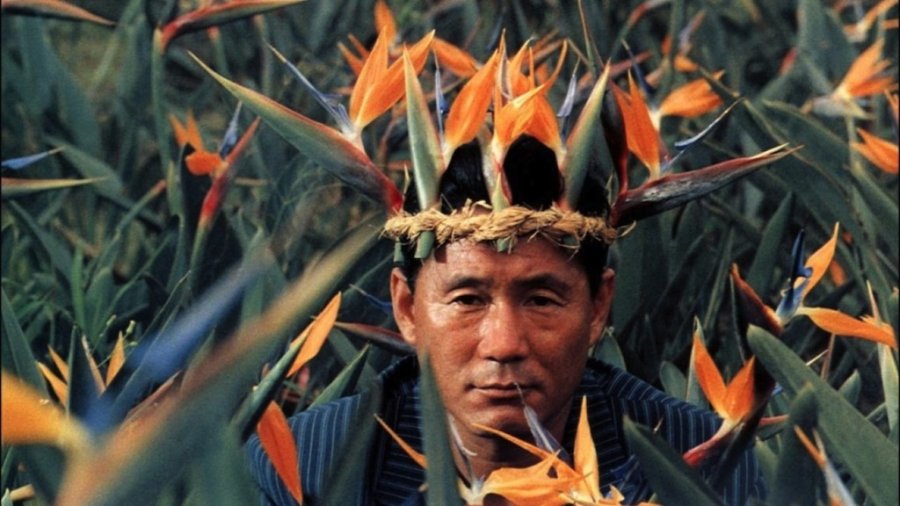
Disclaimer: The author of this article has made an effort to watch every single feature film directed by Takeshi Kitano. However, a handful of movies in which he contributed only as a writer/actor remain untraceable or difficult to access to date. I apologize for not including these works in the article. This article can be viewed in dark mode.
If there is one modern artist who deserves the title of “a renaissance man,” then undoubtedly he has to be Takeshi Kitano (also known by the stage name “Beat Takeshi”). This inconspicuous stand-up performer took the realm of cinema by the storm with his unique auteur style and gripping stories about fallen cops, fatalistic yakuza gangsters, incurable lovers, and lone peacemakers. At one moment, you see him having this dangerous gaze as if he is about to end your miserable existence, and a few seconds later, he enjoys a discussion about spirituality with Japan’s most wanted terrorist. Indeed, this man is the immortal icon of Japanese pop culture. It is my great honor to present to the MDL community the director, actor, writer, editor, producer, TV presenter, comedian, painter, magazine columnist, singer, tap dancer, and philosopher… Takeshi Kitano.
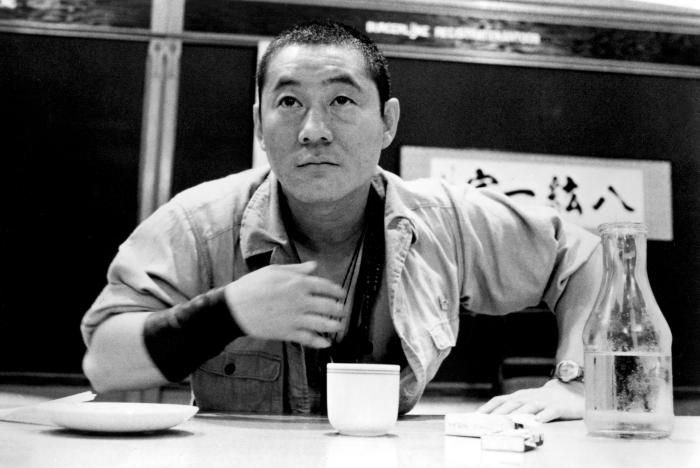
Takeshi was born and raised in the working-class district of Adachi, Tokyo. His mother was a factory worker, whereas his father worked as a house painter (though he was also active in the yakuza underworld). Apart from putting up with three siblings, young Takeshi killed time by admiring baseball players and yakuza gangsters whom one could frequently encounter in Adachi. Years later, Kitano recalled that he looked up to them because they seemed like authority figures (always telling children about having good manners and being good to parents). Nevertheless, the appearance of yakuza as men of honor was just an illusion and Kitano realized this thanks to his mother who told him that there is no future for decent people in the world of crime.
With parental support, Takeshi enrolled in Meiji University and studied mechanical engineering, but he was forced to put studying on hold due to a wave of student strikes in the 1960s. With bleak prospects for proper employment, Kitano moved to the Asakusa district where he was doing odd jobs at shady bars and nightclubs. It was at this time when he gave a try to stand-up comedy. While trying his luck as an event host, Takeshi met another struggling young comedian, Kiyoshi Kaneko. The two quickly became friends and decided to join forces in order to break into the world of showbiz. They became The Two Beats: Beat Takeshi and Beat Kiyoshi.
 The comedic duo relied on the straight man–funny man type of humor, with Kitano performing the latter part. They started doing gigs in 1972, and soon after that, they found themselves being featured on variety shows. Nevertheless, at the beginning of the 1980s, the duo broke because Kitano did not wait for the reactions of his partner and kept on spitting out jokes to the audience. Yet, Kitano did not forget about his comedic roots because he referenced them in his movie Kids Return (1996) and he also gave Kiyoshi Kaneko a cameo role in Kikujiro (1999).
The comedic duo relied on the straight man–funny man type of humor, with Kitano performing the latter part. They started doing gigs in 1972, and soon after that, they found themselves being featured on variety shows. Nevertheless, at the beginning of the 1980s, the duo broke because Kitano did not wait for the reactions of his partner and kept on spitting out jokes to the audience. Yet, Kitano did not forget about his comedic roots because he referenced them in his movie Kids Return (1996) and he also gave Kiyoshi Kaneko a cameo role in Kikujiro (1999).
The first opportunity for Takeshi to break away from the image of a happy-go-lucky guy came with the movie Merry Christmas, Mr. Lawrence (1983) directed by Nagisa Oshima. The director saw the potential in the young actor and he cast him as a brutal POW camp sergeant. Kitano was really proud of his first entirely dramatic performance but he was shocked to discover that the viewers burst into laughter upon seeing Sergeant Hara on screen. The image of Beat Kitano was too engraved in the minds of moviegoers.

With the encouragement of Nagisa Oshima, young Kitano was determined to continue playing serious roles. In many television productions of the 1980s, he appeared, for instance, as a serial killer or a religious cult leader. Yet, another break for him came in the form of a game show called Takeshi’s Castle. This wacky program about a large group of brave contestants storming the titular castle (the owner of which was Takeshi himself) enjoys a cult following even today. It was aired between 1986 and 1990 and consists of 133 episodes in total. You can still track down subtitled episodes of the show on the net.
In addition, Kitano generated a great deal of controversy in the 1980s. When a “Friday” tabloid published pictures of Kitano with a young woman, Takeshi perceived this as an attack on his privacy, so he stormed the publisher’s premises together with an army of his supporters. Due to this act, he was suspended from appearing on television for a certain period of time. The director himself reflected on this situation with the following statement: “There’s the TV Beat Takeshi and there’s Takeshi Kitano, the film director. But there’s another persona behind them, and he is the one who is controlling both of them. He is like a puppeteer. Basically, I don’t understand this third person. He probably has a mouthful personality.” (source)
In 1989, Kitano had another chance to play a dark character, this time in Violent Cop. However, he already had a blooming career on TV, so he could not reach an agreement with director Kinji Fukasaku over the shooting schedule. Interestingly, the director left the project and the distributor (probably being in desperation) agreed that Kitano could rewrite and direct the movie himself. As a result, Violent Cop marks his directorial debut and indeed one can see the rise of an artist: Slow pace, long shots, graphic violence, and the usage of deadpan humor would go on to become the director’s trademarks.
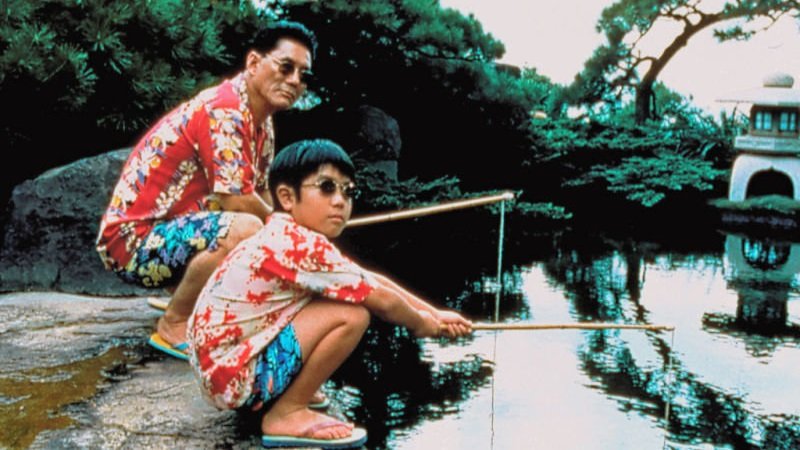
Even though Violent Cop was a moderate success in Japan, the producers were not discouraged and Kitano was offered a new project to direct. The film Boiling Point tells the story of two good-for-nothing guys from a local football team who want to get even with the yakuza who beat up their coach. In consequence, they team up with a crazy sociopath from Okinawa (played by Takeshi). Needless to say, this unconventional comedy/drama is the first, complete representation of Kitano’s cinematic style. Nevertheless, the motion picture became a box office failure in Japan.
For his third movie project, Kitano made a conscious decision to withdraw from the yakuza vibes and tell a more relatable story. A Scene at The Sea released in 1991 is a beautiful and touching tale about the relationship between deaf-mutes (masterfully played by Claude Maki and Hiroko Ooshima) and a passion for surfing. To me, the movie feels like a combination of Charlie Chaplin’s City Lights (1931) and Luc Besson’s Le Grand Bleu (1988) due to minimal dialogue and breathtaking visuals. Kitano reflected in an interview that he is very fond of this film and that he would not be able to shoot it today the way he did it back then. The director also admitted that Joe Hisashi’s powerful music score greatly enhances the viewing experience.
Nevertheless, A Scene at the Sea did not become a huge hit either. The year 1993 saw the release of Sonatine. This weird tale about yakuza being forced to go into hiding within the picturesque Okinawa setting won the hearts of the critics and the viewers in Europe and America, especially the up-and-coming director Quentin Tarantino was so impressed that he later went on to buy the distribution rights for the movie.
 |
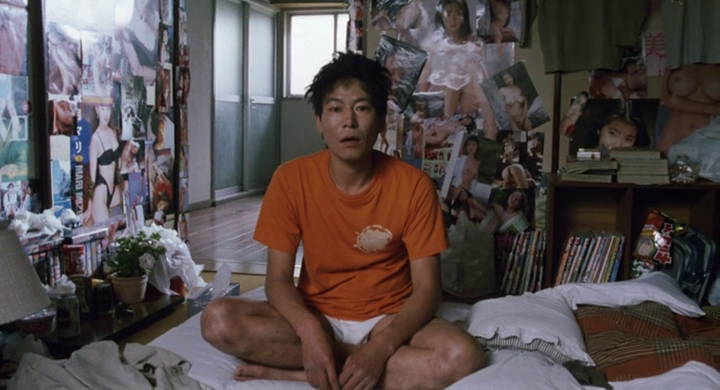 |
In 1994, Kitano tried to go back to his stand-up roots while making Getting Any? a comedy about a guy who tries to come up with inventive ways that will allow him to finally have intercourse with a girl. Honestly, the film is a mixed bag of vignettes that parodies popular genres, such as gangster flicks, tokusatsu pictures, or period dramas. The producer of the film admitted that Kitano was difficult to work with during the post-production and, possibly, he was suffering from depression at that time. Unfortunately, in August the same year, Takeshi had a motor scooter accident. He was transported to the hospital in a critical state. His primary injury was partial paralysis of the right side of his face. However, he underwent numerous plastic surgeries in order to bring down the effects of the paralysis. Kitano himself called the accident “the unconscious suicide attempt”. (source) Soon after his recovery, he released Kids Return in 1996.
Arguably, Kitano’s biggest financial hit came with Hana-bi in 1997. The harrowing yet aesthetically-pleasing drama about a cop struggling with his wife’s illness won numerous awards at film festivals. Kitano cites Hana-bi as the movie which allowed him to be recognized by fellow Japanese filmmakers and accepted into the circle.
Kitano ended the decade with heart-warming Kikujiro (1999), a tear-jerking story about a young boy who receives kindness and warmth from complete strangers. This film is definitely on par with Kitano’s previous non-violent masterpiece A Scene at the Sea.
Steady 2000s and Recent Projects |
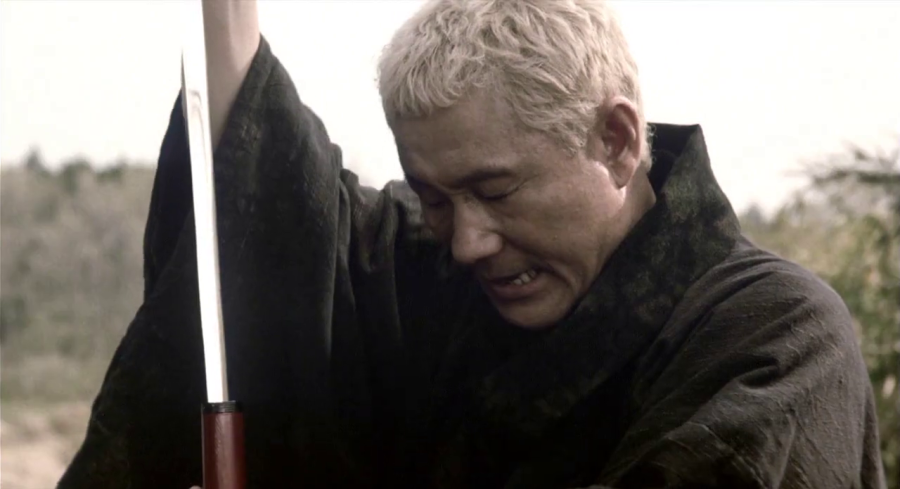
The early 2000s marked Kitano’s return to collaboration with director Kinji Fukasaku on his latest project called Battle Royale. Allegedly, Takeshi was given the role of a homeroom teacher who runs the morbid death tournament in order to reinforce the intertextual connection between Battle Royale and the Takeshi’s Castle game show. In 2002, Kitano made a breathtaking romance film called Dolls; however, it was not well-received in Japan.
In order to prove himself as a commercial filmmaker, Kitano reluctantly accepted the offer to make the remake of Zatoichi. It was tough to break through the towering icon of actor Shintaro Katsu who played the character in the previous 26 movies, but Kitano did a marvelous job on the film, creating a fast-paced tale about bloodthirsty exploiters, dancing villagers, and one righteous swordsman. Zatoichi (2003) became a big box-office success in Japan and overseas.
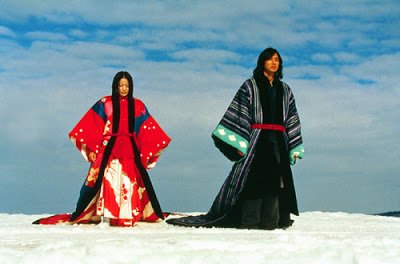 |
 |
After this unexpected commercial success, Kitano seemed to have regressed to meta-narrative tales, re-analyzing himself as a filmmaker. I am talking about Takeshis’ (2005) and Glory to the Filmmaker (2007) which veer into the surrealist comedy area of Getting Any? while poking fun at Takeshi and his struggles to come up with original story ideas.
The year 2008 brought the wonderful Achilles and a Tortoise (2008), which is a thoughtful evaluation of art, the figure of an artist, and personal passions that drive him forward. Strangely enough, the movie is not often mentioned in various must-watch rankings devoted to Kitano’s films.
The latest projects of Kitano include the yakuza-oriented Outrage trilogy and a personal project called Ryuzo and the Seven Henchmen. Allegedly, Kitano agreed to make Outrage sequels on the condition that he will get the financing for the latter picture. As of 2017, there is no news of him making another movie.
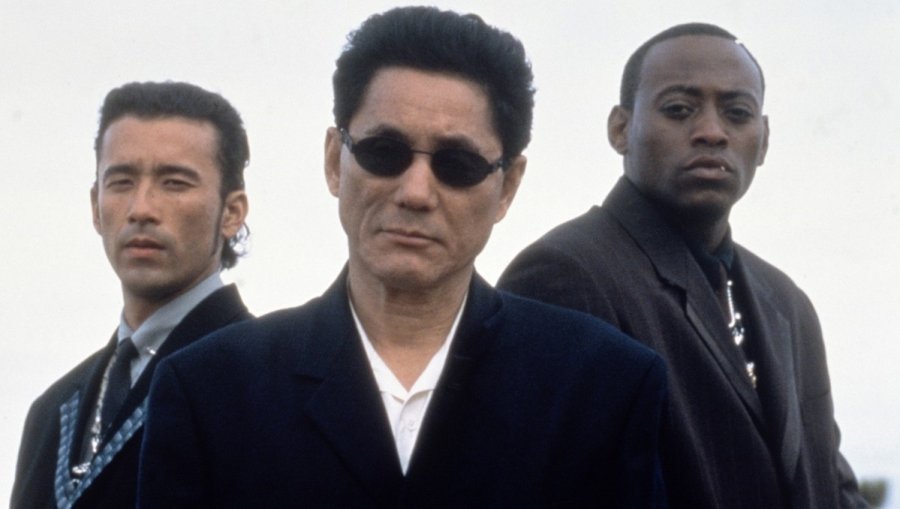
Indeed, like many other popular directors and actors from Asia, Takeshi Kitano also tried to break through in the Hollywood mainstream. In 1995, he starred alongside the kickass Keanu Reeves in a cyberpunk film called Johnny Mnemonic. In 2000, he directed and produced the yakuza drama Brother where he teamed up with Omar Epps (House M.D. fans will probably recognize the actor as Dr. Foreman). In addition, in 2017, he played the character of Daisuke Aramaki, the head of Public Security Section 9, in the live-action adaptation of Ghost in the Shell. Though visually stunning, the movie was a major disappointment among the critics and anime fans.

Believe it or not, but Takeshi is also an avid writer of fiction and non-fiction books. Some of his works were allegedly translated and published in France in the early 2000s. He also frequently comments on topical issues in Japan either on TV or radio. Recently, he contributed his voice and likeness to the SEGA video game Yakuza 6: The Song of Life.
 With regard to the realm of TV dramas, Takeshi Kitano is the chief creator of the three-season drama Kikujiro to Saki, starring the great Shigeru Muroi and Takanori Jinnai in the leading roles, which was inspired by his family experiences. Additionally, he appeared as a guest star in the special episode of Doctor X drama together with his frequent co-star, Kayoko Kishimoto.
With regard to the realm of TV dramas, Takeshi Kitano is the chief creator of the three-season drama Kikujiro to Saki, starring the great Shigeru Muroi and Takanori Jinnai in the leading roles, which was inspired by his family experiences. Additionally, he appeared as a guest star in the special episode of Doctor X drama together with his frequent co-star, Kayoko Kishimoto.
Author’s Personal Recommendations |
 |
A Scene at the Sea (1991): Absolutely beautiful in its simplicity, yet heartbreaking at the same time. The movie clearly shows that Kitano is a brilliant storyteller. |
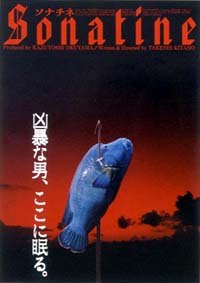 |
Sonatine (1993): I like to call this particular film “National Lampoon’s Yakuza Vacation”. It is just so off the wall, yet extremely watchable. Definitely my favorite out of Kitano’s many yakuza flicks. |
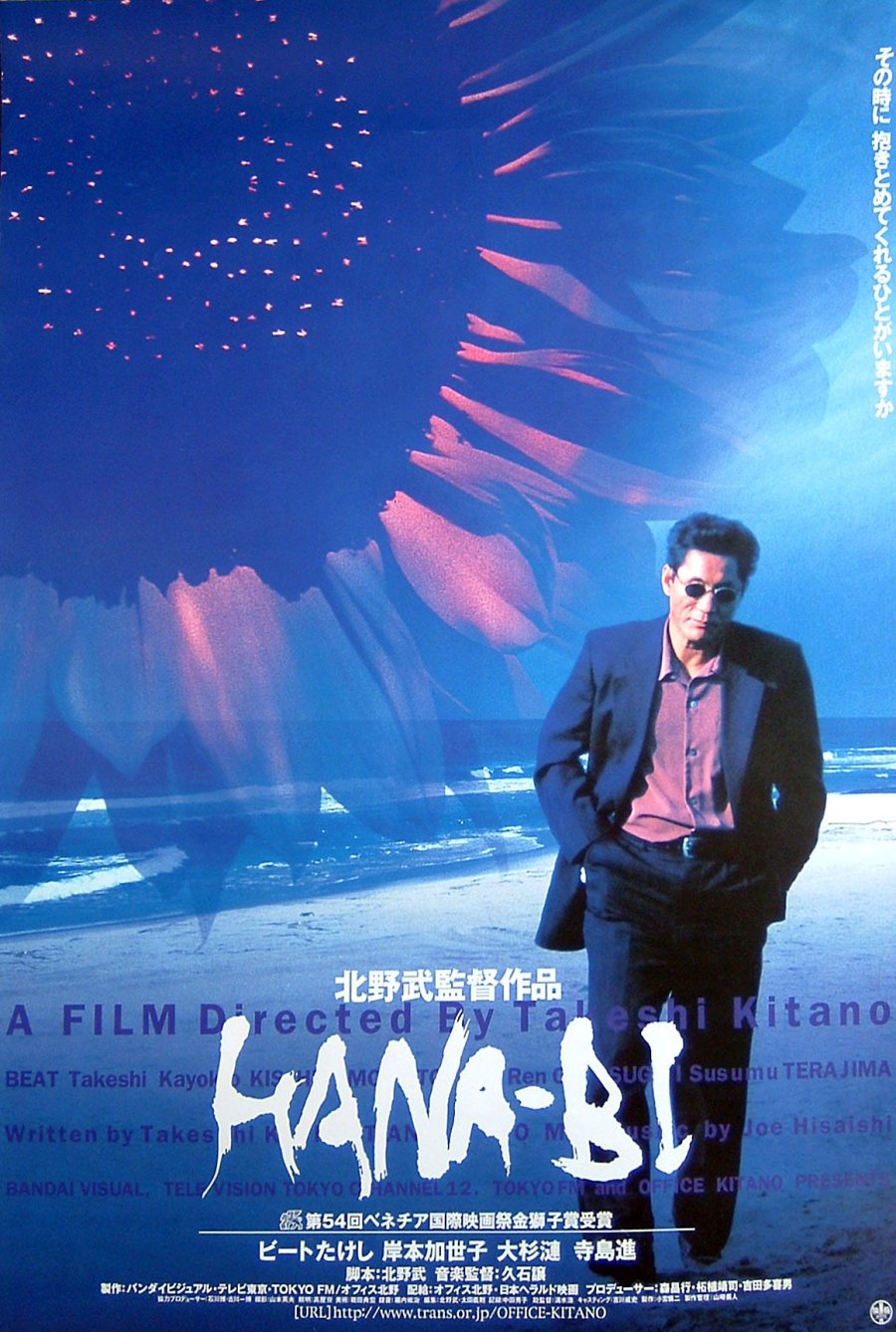 |
Hana-bi (1997): To be honest, I have a love and hate attitude towards this film. The story is extremely dark and fatalistic, yet the visuals keep my eyes glued to the screen. The brilliant supporting role of the late Ren Osugi cannot go unnoticed as well. |
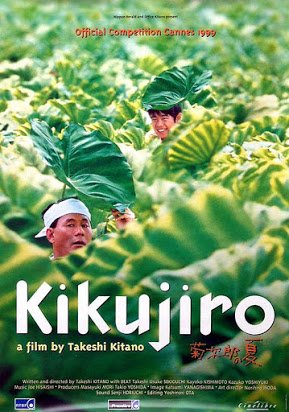 |
Kikujiro (1999): The film that introduced me to Takeshi Kitano and his rich filmography. Undeniably magnificent. Period. I’m not going to share any spoilers so as not to destroy your viewing experience. |
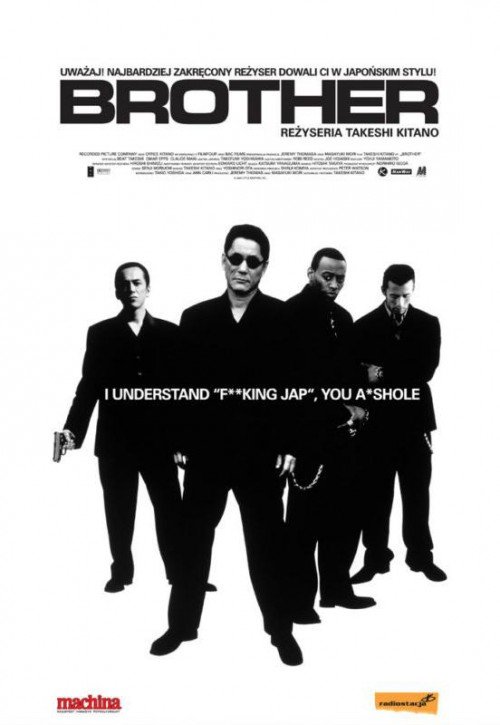 |
Brother (2000): Kitano’s fanbase does not really give this film much attention. If you have seen Sonatine or Hana-bi, then you know the drill. However, I have a soft spot for this flick because it was the first of Kitano’s productions released officially in Poland. Kitano, Omar Epps, and Claude Maki have great onscreen chemistry. |
 |
Zatoichi (2003): If you are new to the Zatoichi franchise, then it is best to start with Kitano’s interpretation of the popular character. You will not be disappointed. |
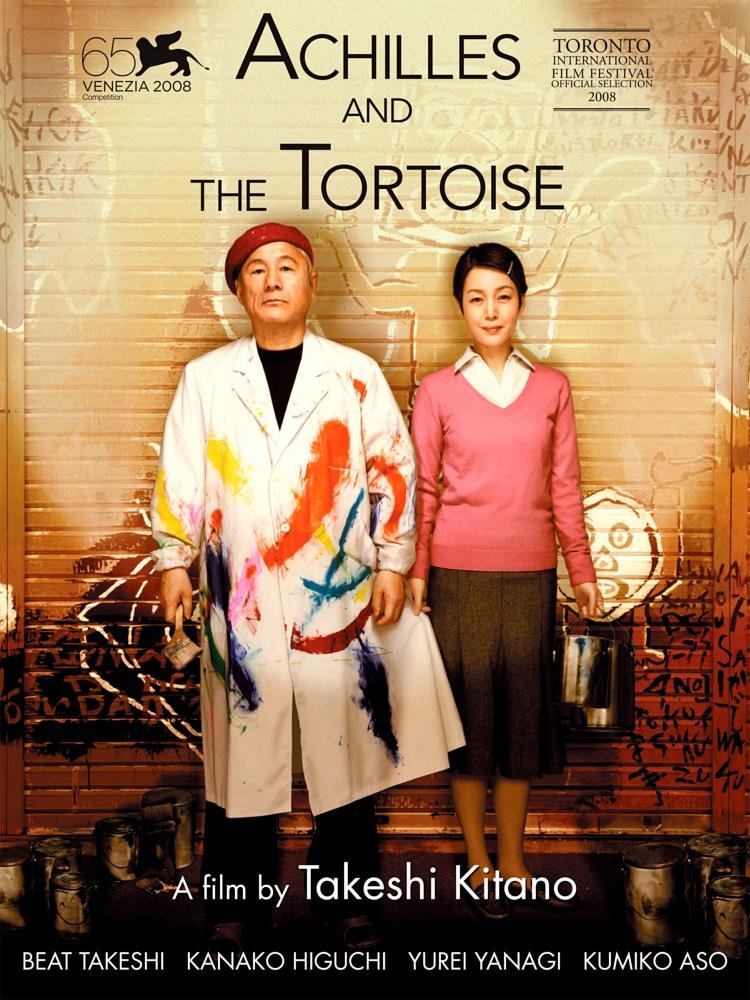 |
Achilles and a Tortoise (2008): When I played the film for the first time, I did not have high expectations, but it stole my heart! It is high up on the top of films about creativity/talent together with Shine (1996) and Finding Forrester (2000). |
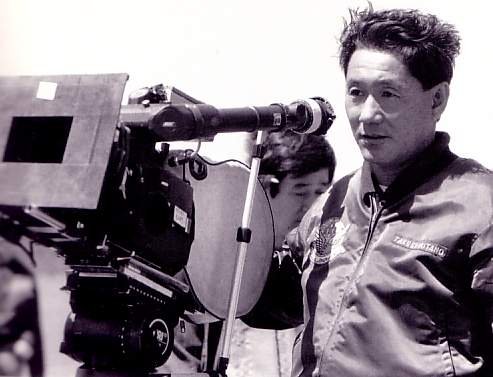 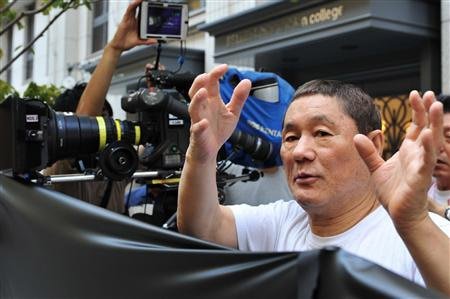 |
|
Well, that’s as much as I could gather about the legendary “Beat” Takeshi. Even though he is already 73 years old, I sincerely hope that he will continue to make more movies that will surprise and touch the viewers across the globe. This man is truly an artist with a lust for life.
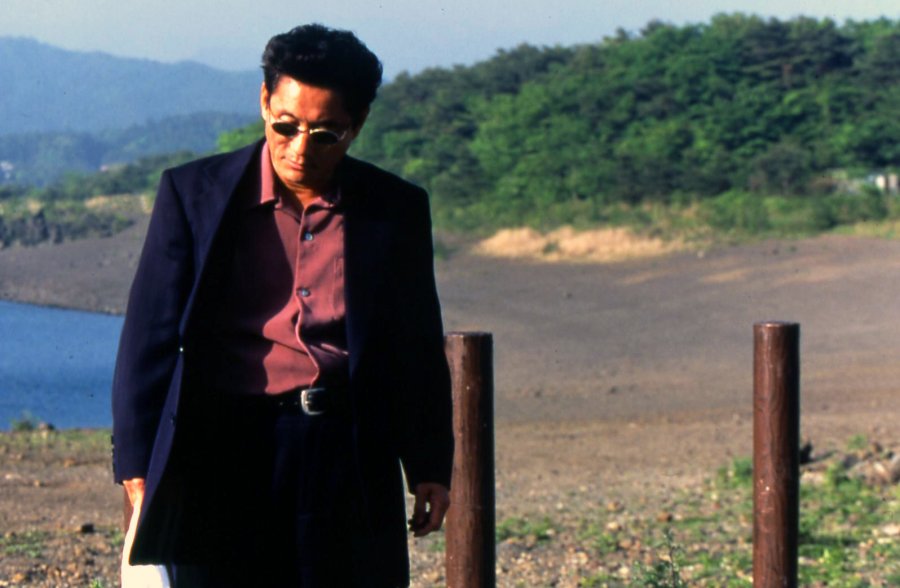
Sources: Asianwiki * Scenes By The Sea (Documentary) * Wiki * Zatoichi Making of * Kitano Blue – Interview with Takeshi Kitano * Ghost in the Shell – On Set Visit with Takeshi Kitano * “Beat” Takeshi – The Hollywood Flashback Interview * Takeshi Kitano – Midnight Eye Interview.
Ebisuno92’s Previous Articles: An Ultra Fan’s Guide to Kyoko Kagawa * Feel the Power of Office Ladies: Shomuni Retrospective * “Watashi, Shippai Shinai No De!”: Daimon Michiko as the Ultimate Doctor-Hero (with ReikaBleu) * “Come on over, Spiritual Phenomena!” TRICK, A Franchise Retrospective * From Best Korea with Love: An Introduction to North Korean Dramas & Movies (with Seonsaeng) * Cursed Cassettes, Countdowns, and Corpses: A SFW Guide to the Ring Series * Blast from the Past: Did Bayside Shakedown Destroy Japanese Cinema? * Weekend Recommendations: Father Knows Best * Godzilla’s on the Loose: 65 Years of Kaiju Rampage * An Ultra Fan’s Guide to Yeoh Michelle * Blast from the Past: A Guide to “Girls with Guns” Genre * Weekend Recommendations: Old School Movies * Ebisuno92’s Weekend Movie Picks *
So this was my retrospective look at the career of Takeshi Kitano.
Have you seen his movies? Please share your thoughts in the comments.
As always, thank you for reading!
Editors: BrightestStar (2nd editor)
[ad_2]
Source link

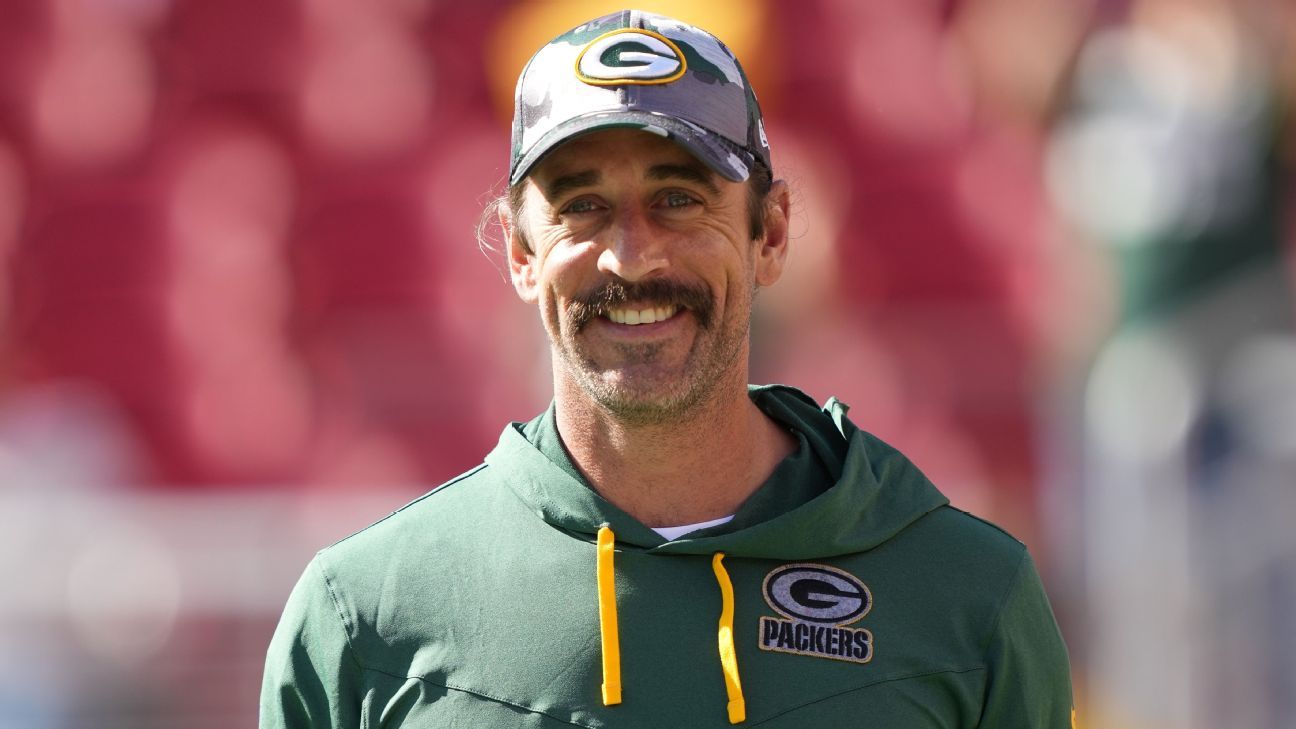



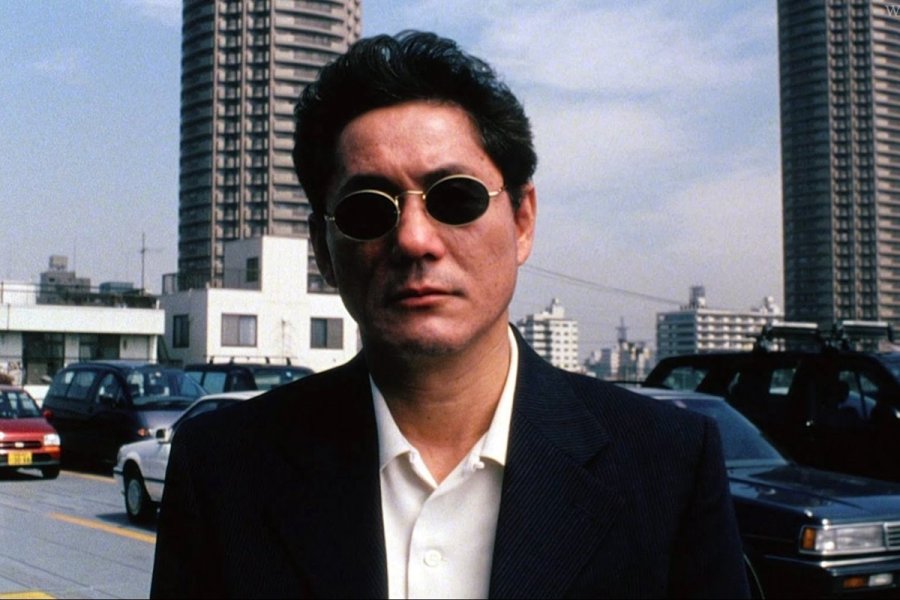



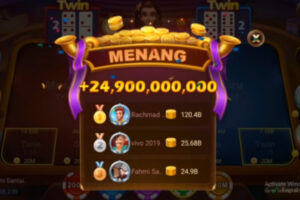
More Stories
Park Hyung Sik and Han So Hee Radiate Chemistry in Cute Promotional Stills for Disney+ K-drama Soundtrack #1
Go Kyung Pyo in discussion to join Park Min Young and Kim Jae Young in a new drama
New Trailer is Out for “Green Mothers Club”